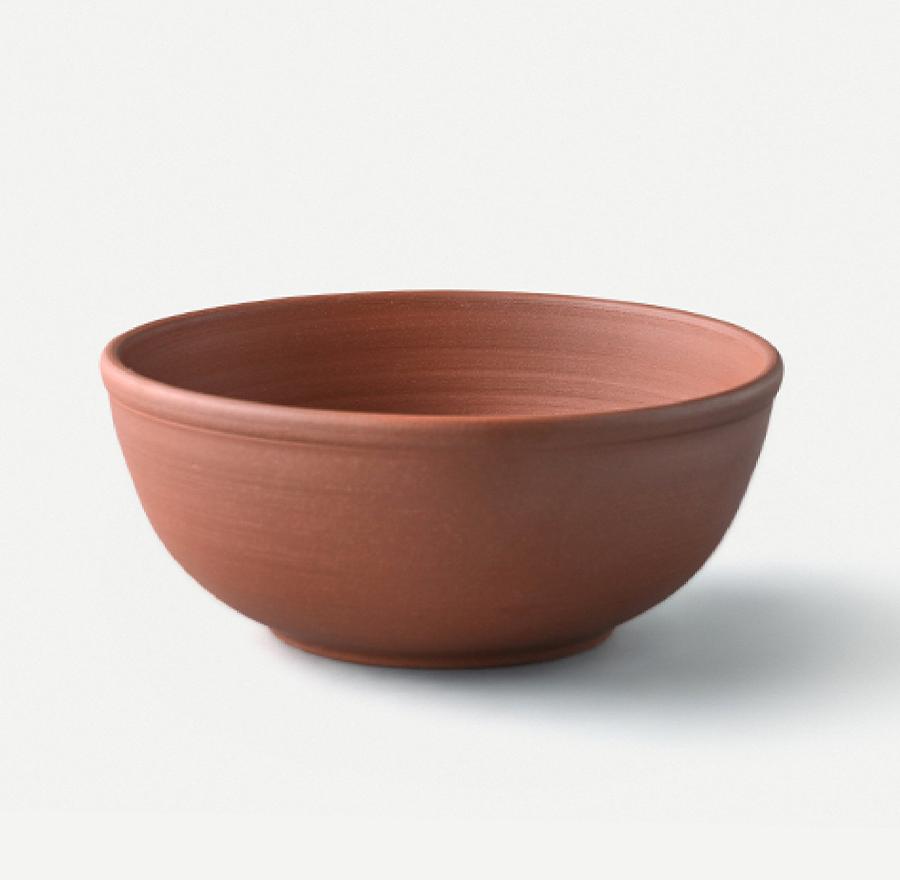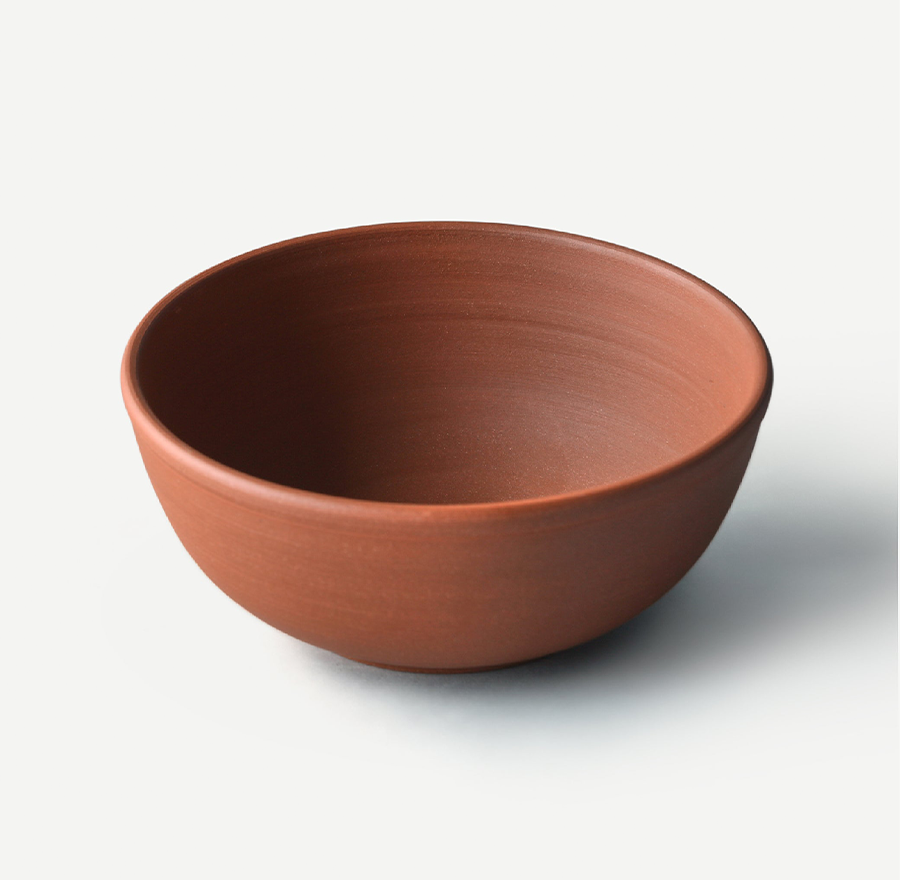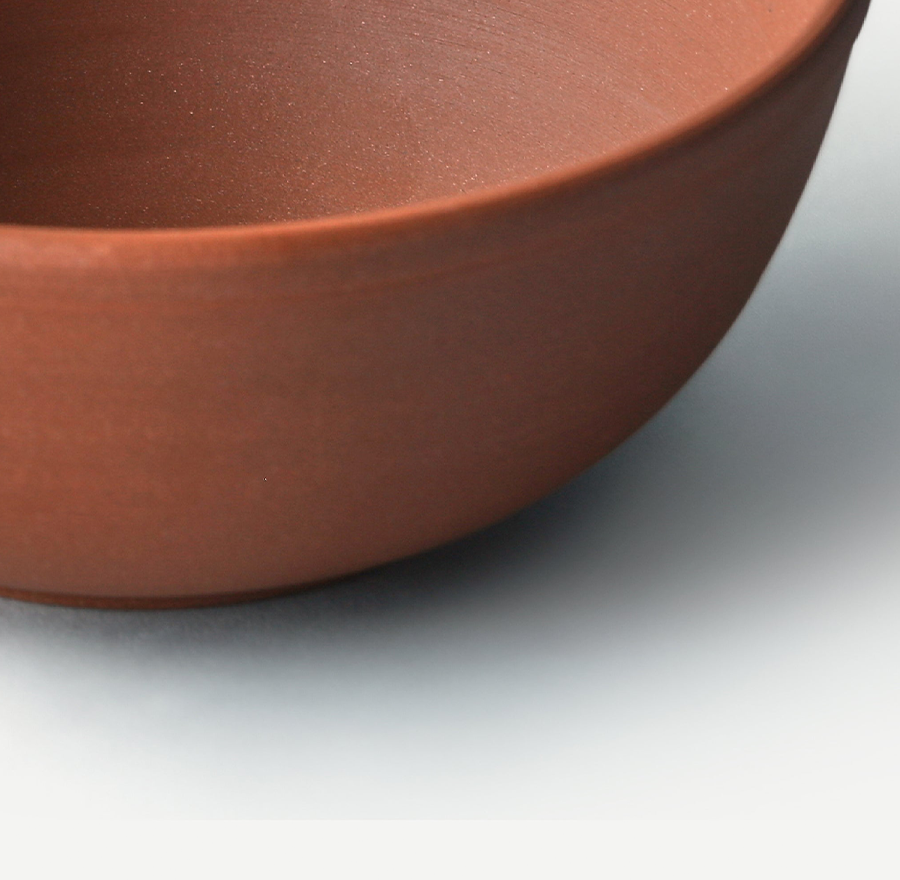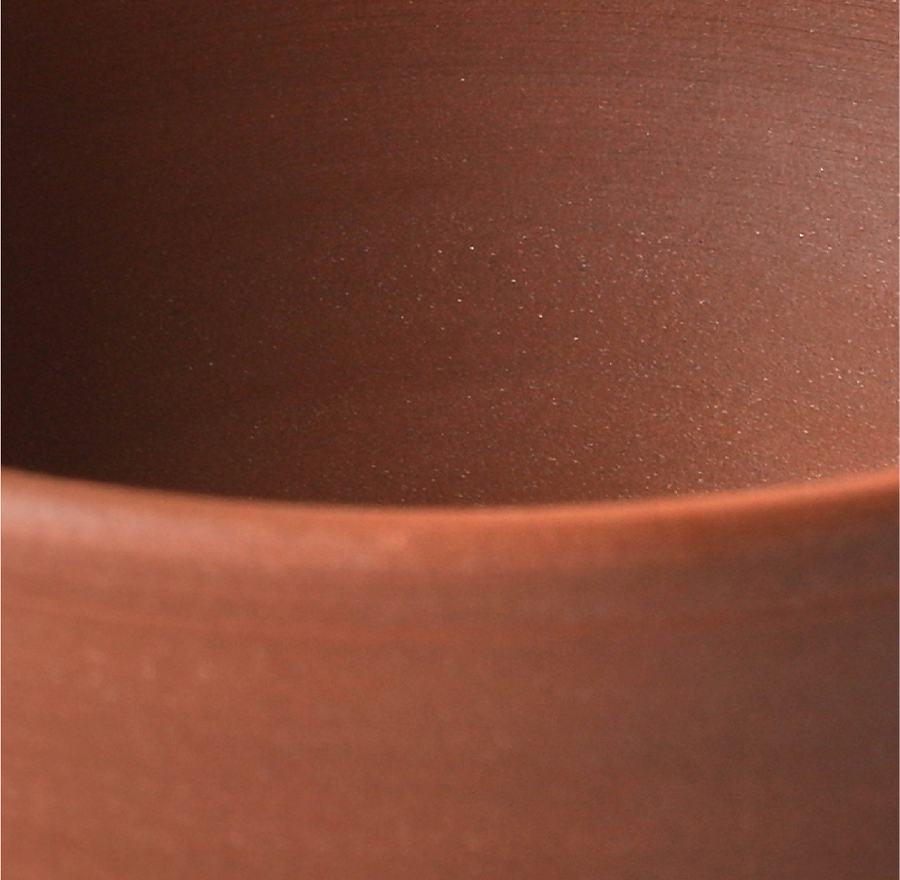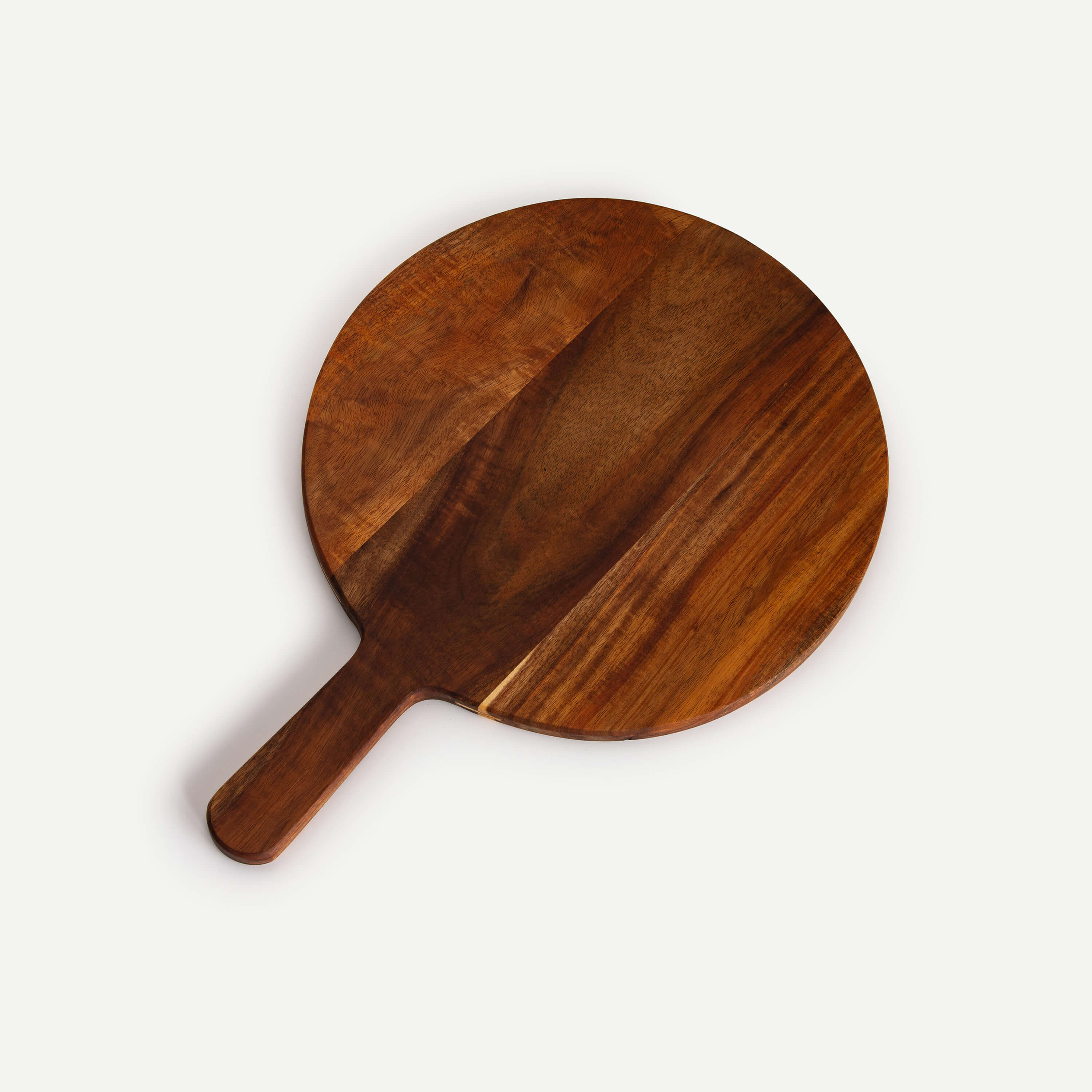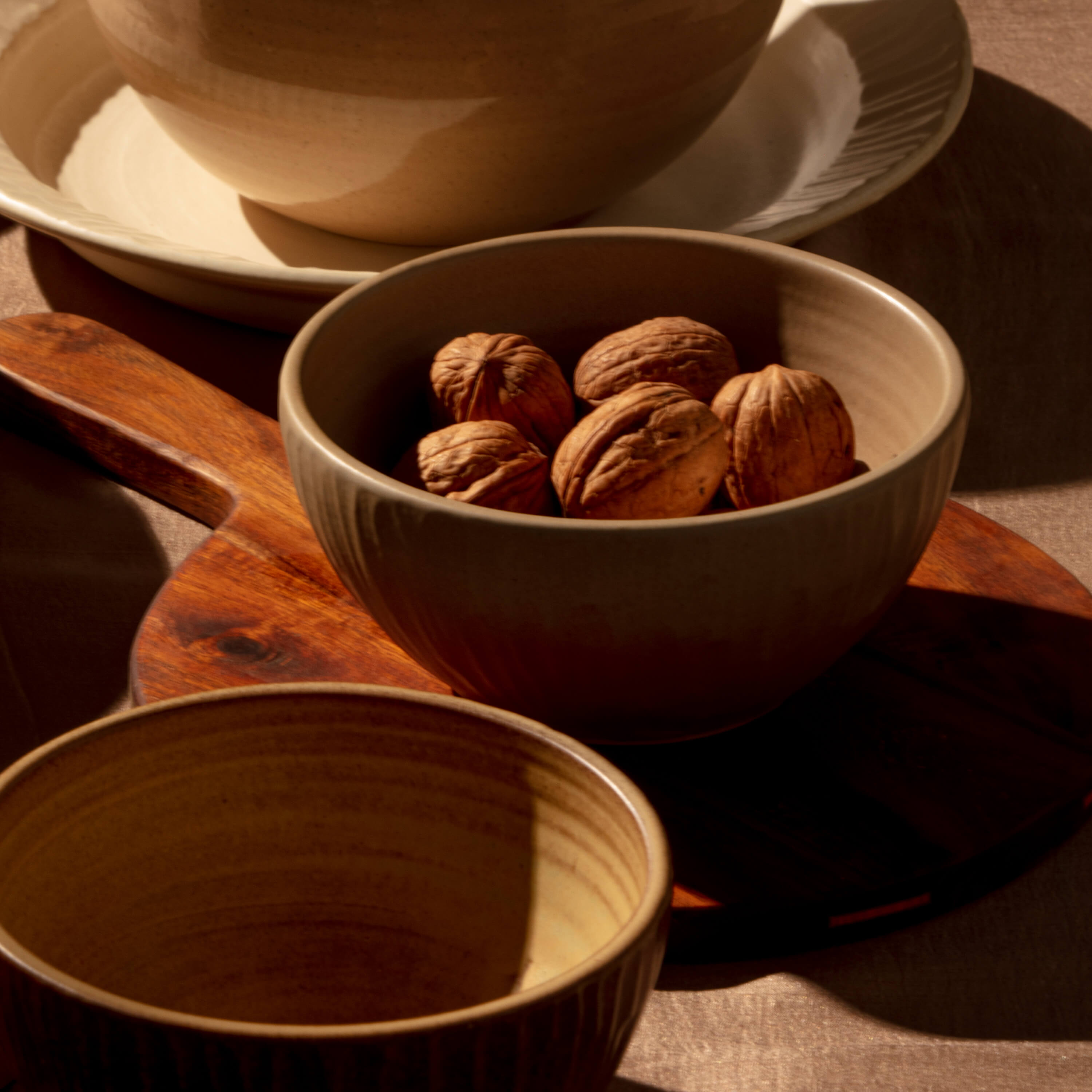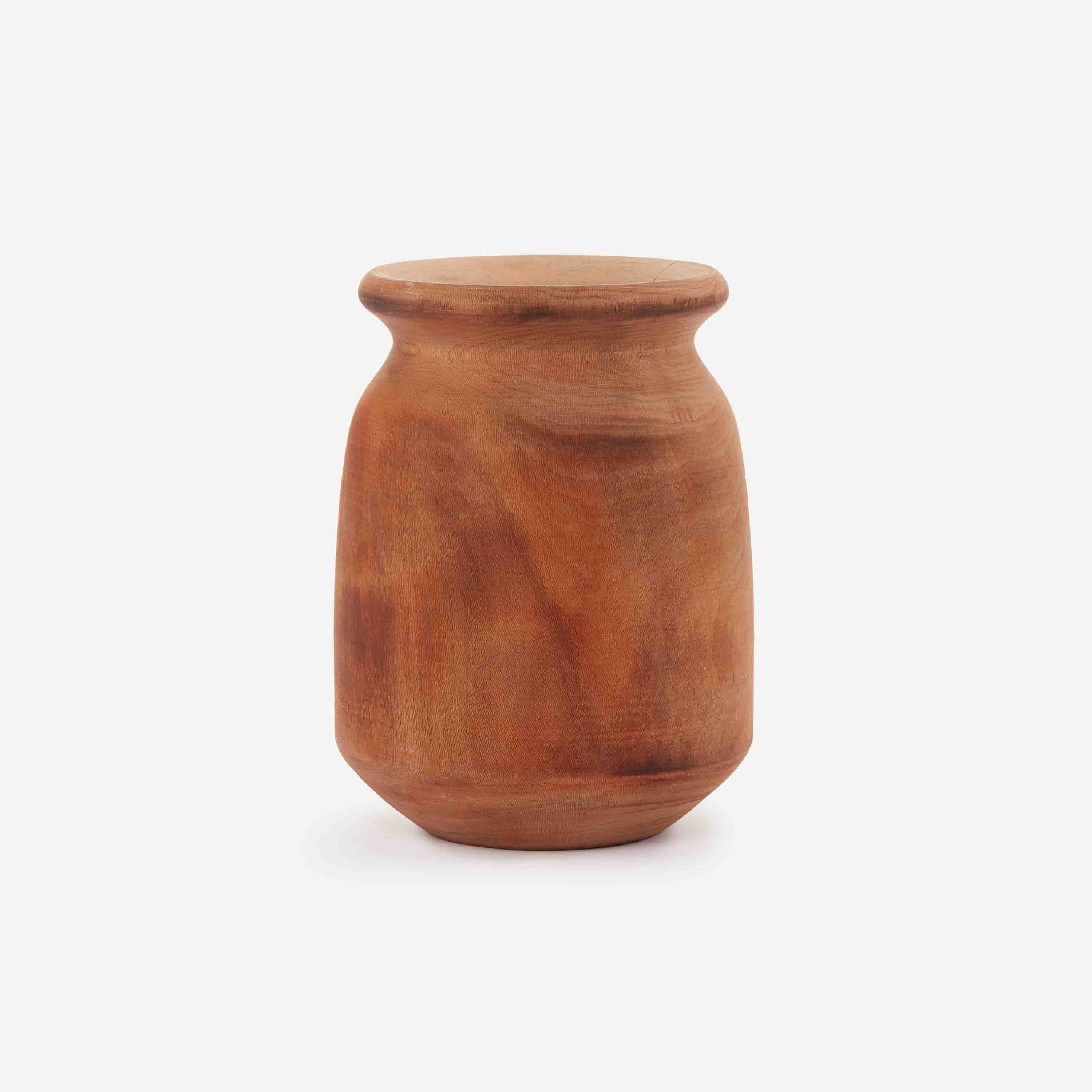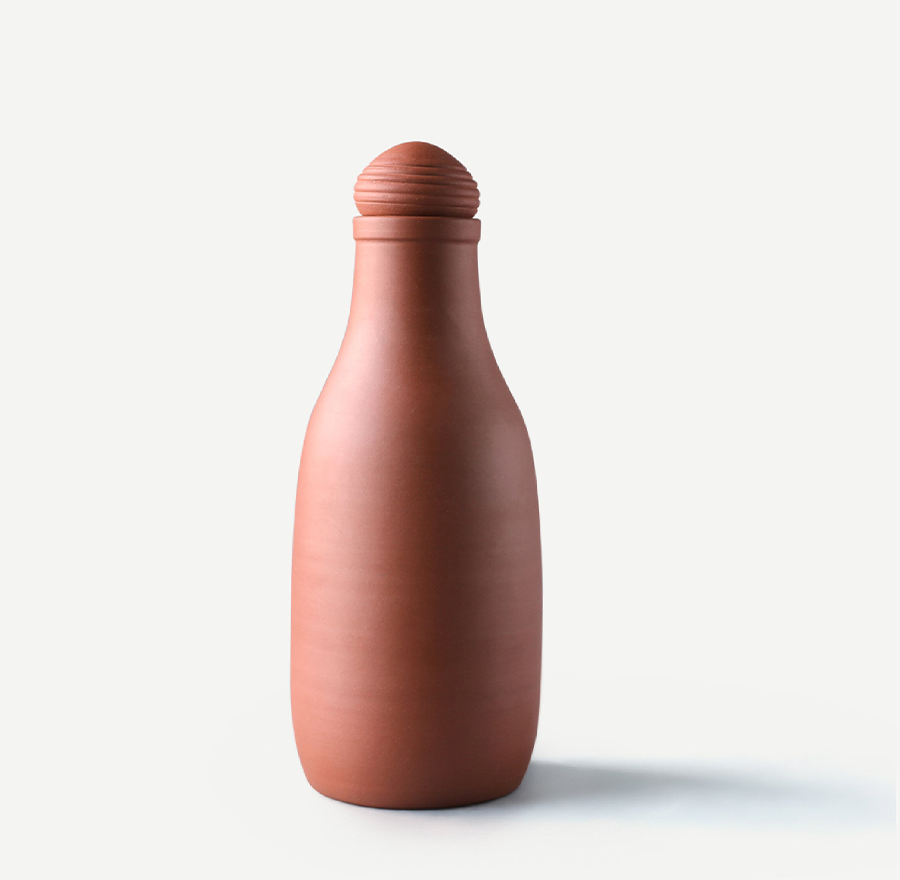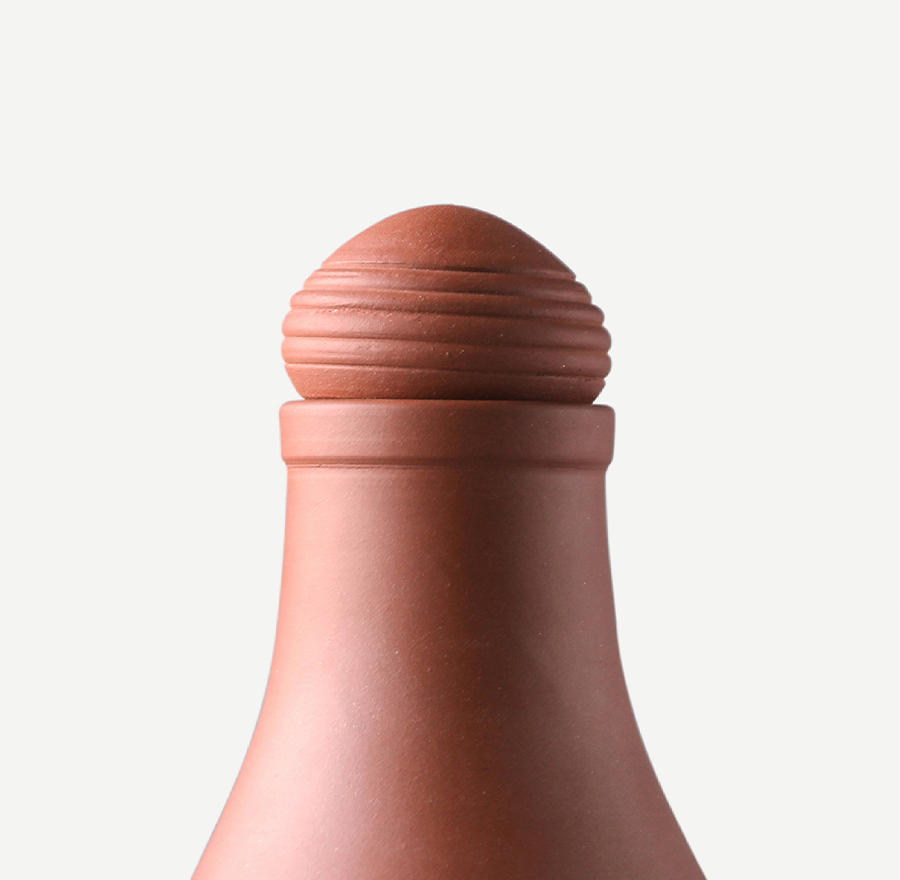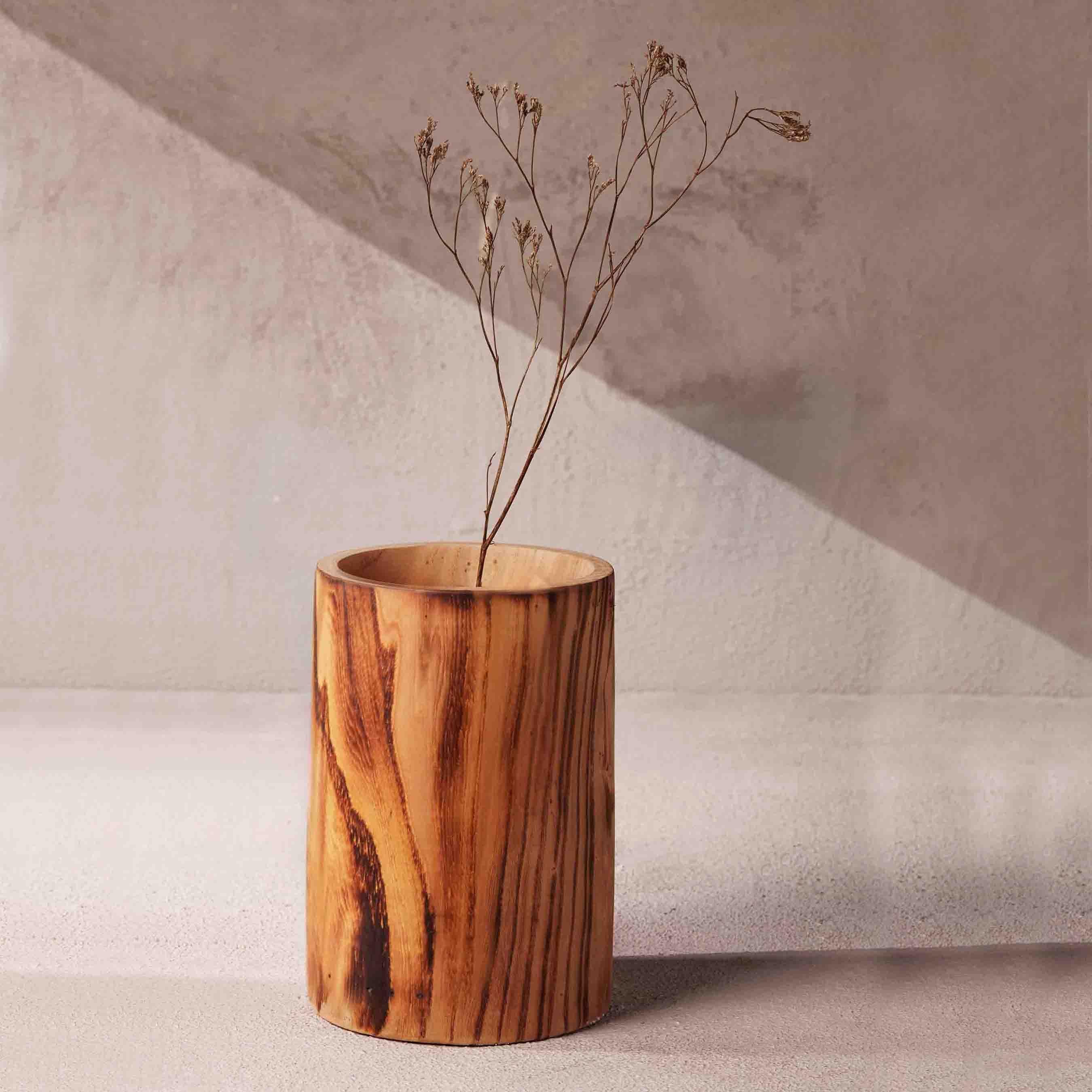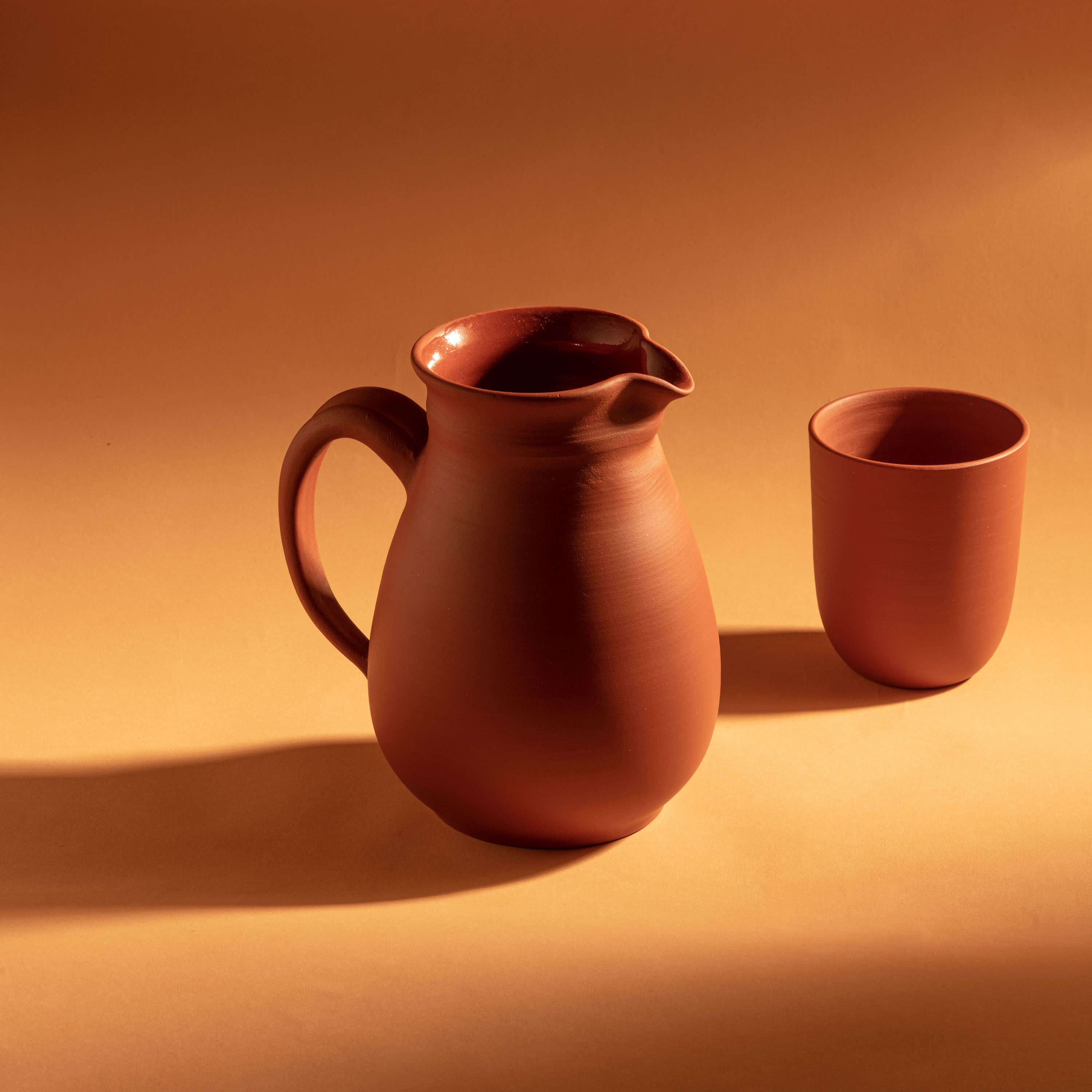SCINTILLA SNACK BOWL
Classic, understated design meets traditional craft in this terracotta snack bowl
Classic, understated design meets traditional craft in this terracotta snack bowl
Craft Type: Terracotta
Our fine terracotta is handcrafted in the heart of Maharashtra by gifted craftsmen, descending from a lineage of traditional kalakars. This art form harks back to the traditional uses of terracotta vessels such as to store water, to keep it cool on a hot summer's day or drinking warm chai in a kulhad (cup) molded in clay. Using ancestral knowledge, our craftsmen channel the creative energy of the elements of nature, to create pieces that cut through the fabric of time and civilization.
This product is handcrafted and slight variations in colours, textures and forms are to be expected.
Made in: Maharashtra
Material: Terracotta
Dimensions (cm): 16.5(L) x 16.5(B) x 9.5(H); Dia: 16.5
Dimensions (inches): 6.5(L) x 6.5(B) x 3.7(H); Dia: 6.5
Capacity: 530 ml
Weight: 415 grams
No. of pieces in a set: 1, One Bowl
Clay, a natural material, is used to make ceramic wares. It is kneaded and then thrown on a pottery wheel, where it is shaped by hand into this product. The clay product then goes through the process of bisque firing, glaze application, drying, and then glaze firing to make the final ceramic product.
Pottery in the Indian subcontinent has a long history — it has existed as a craft form for centuries. Evidence of earthenware has been found in the early settlements of Lahuradewa and later during the Indus Valley Civilization. Recent times have seen pottery taking on modern design sensibilities, aided by artists and potters that are breathing new life into the craft form. Studio pottery in India is said to have been started by Rabindranath Tagore in Shantiniketan, West Bengal. It further branched out into two styles, which developed in Delhi under Gurcharan Singh and in Pondicherry under Ray Meeker’s Golden Bridge Pottery.
- Wash by hand only, using a mild dishwashing soap. Dry using a soft towel or tissue. Avoid stacking ceramic in the sink.
- This ceramic product is microwave-safe.
- While stacking for storage, consider using tissue in between pieces.
- Description
- Process & Craft
- Care
Craft Type: Terracotta
Our fine terracotta is handcrafted in the heart of Maharashtra by gifted craftsmen, descending from a lineage of traditional kalakars. This art form harks back to the traditional uses of terracotta vessels such as to store water, to keep it cool on a hot summer's day or drinking warm chai in a kulhad (cup) molded in clay. Using ancestral knowledge, our craftsmen channel the creative energy of the elements of nature, to create pieces that cut through the fabric of time and civilization.
This product is handcrafted and slight variations in colours, textures and forms are to be expected.
Made in: Maharashtra
Material: Terracotta
Dimensions (cm): 16.5(L) x 16.5(B) x 9.5(H); Dia: 16.5
Dimensions (inches): 6.5(L) x 6.5(B) x 3.7(H); Dia: 6.5
Capacity: 530 ml
Weight: 415 grams
No. of pieces in a set: 1, One Bowl
Clay, a natural material, is used to make ceramic wares. It is kneaded and then thrown on a pottery wheel, where it is shaped by hand into this product. The clay product then goes through the process of bisque firing, glaze application, drying, and then glaze firing to make the final ceramic product.
Pottery in the Indian subcontinent has a long history — it has existed as a craft form for centuries. Evidence of earthenware has been found in the early settlements of Lahuradewa and later during the Indus Valley Civilization. Recent times have seen pottery taking on modern design sensibilities, aided by artists and potters that are breathing new life into the craft form. Studio pottery in India is said to have been started by Rabindranath Tagore in Shantiniketan, West Bengal. It further branched out into two styles, which developed in Delhi under Gurcharan Singh and in Pondicherry under Ray Meeker’s Golden Bridge Pottery.
- Wash by hand only, using a mild dishwashing soap. Dry using a soft towel or tissue. Avoid stacking ceramic in the sink.
- This ceramic product is microwave-safe.
- While stacking for storage, consider using tissue in between pieces.
Country of Origin: India
Manufacturer Details: Aakar Pot Art: Behind Indapur S.T. Stand, A/P: Talashet, Tal. Mangaon, Raigarh, Maharashtra - 402112

